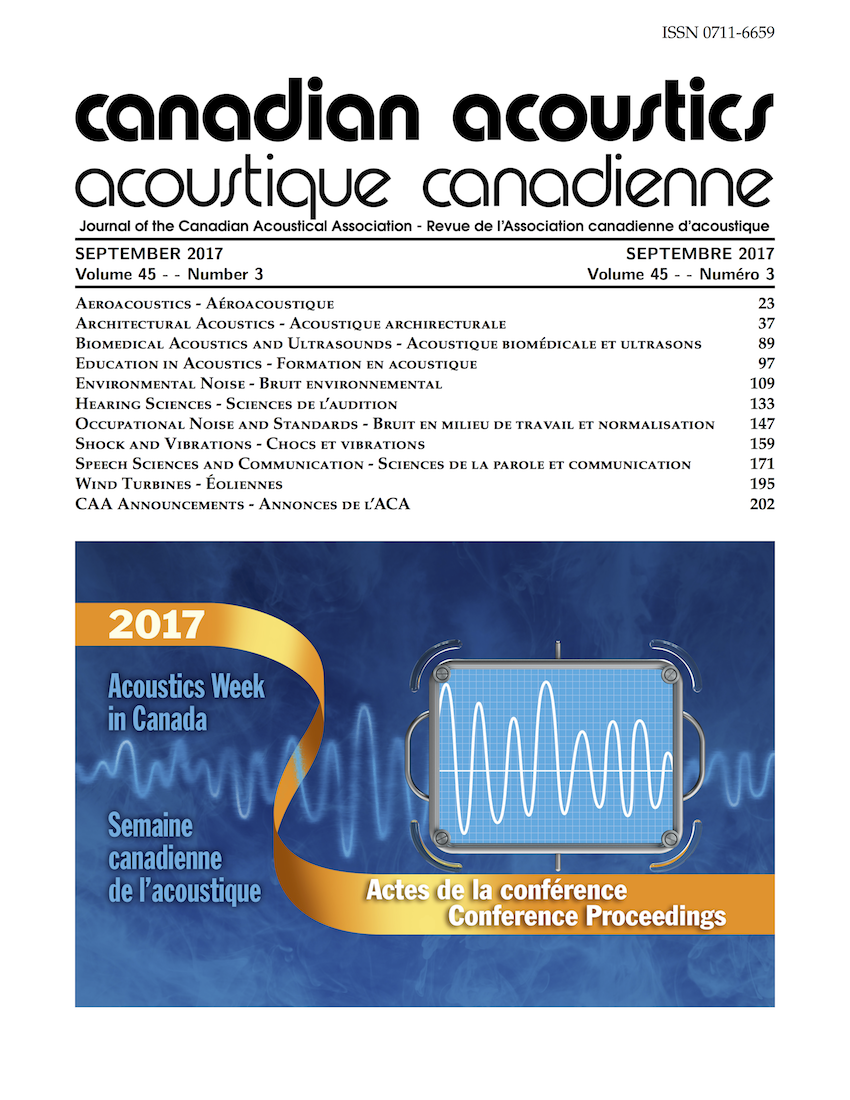Objective Assessment of Companding Architecture for Assistive Hearing Devices
Abstract
Individuals with auditory neuropathy spectrum disorder (ANSD) or auditory processing disorders (APDs) often suffer from temporal and spectral processing deficits leading to degraded speech perception, especially in the presence of background noise. Evidence exists that the exaggeration of temporal and spectral cues may enhance intelligibility, although a comprehensive evaluation of envelope and spectral enhancement algorithms is currently lacking. In the present study, the effect of a companding architecture on speech perception, with and without an additional noise reduction algorithm, was investigated with sentence-level-stimuli in different background noise conditions. The companding structure was assessed objectively using the speech-to-reverberation modulation energy ratio (SRMR), which is a non-intrusive metric for speech quality and intelligibility based on a modulation spectral representation of the speech signal. Results of the present study demonstrated that the companding structure improved the predicted speech intelligibility score for all background noise conditions. Furthermore, results revealed that the application of the Minimum-Mean-Square (MMSE) noise reduction algorithm (Ephraim & Malah, IEEE Trans. Acoust, 1984, pp. 1109–1121), which was previously shown to produce lesser musical noise, can significantly improve the performance of companding structure for all Signal-to-Noise ratio (SNR) conditions. These results can potentially guide the choice and activation of companding structure in assistive hearing devices.
Additional Files
Published
How to Cite
Issue
Section
License
Author Licensing Addendum
This Licensing Addendum ("Addendum") is entered into between the undersigned Author(s) and Canadian Acoustics journal published by the Canadian Acoustical Association (hereinafter referred to as the "Publisher"). The Author(s) and the Publisher agree as follows:
-
Retained Rights: The Author(s) retain(s) the following rights:
- The right to reproduce, distribute, and publicly display the Work on the Author's personal website or the website of the Author's institution.
- The right to use the Work in the Author's teaching activities and presentations.
- The right to include the Work in a compilation for the Author's personal use, not for sale.
-
Grant of License: The Author(s) grant(s) to the Publisher a worldwide exclusive license to publish, reproduce, distribute, and display the Work in Canadian Acoustics and any other formats and media deemed appropriate by the Publisher.
-
Attribution: The Publisher agrees to include proper attribution to the Author(s) in all publications and reproductions of the Work.
-
No Conflict: This Addendum is intended to be in harmony with, and not in conflict with, the terms and conditions of the original agreement entered into between the Author(s) and the Publisher.
-
Copyright Clause: Copyright on articles is held by the Author(s). The corresponding Author has the right to grant on behalf of all Authors and does grant on behalf of all Authors, a worldwide exclusive license to the Publisher and its licensees in perpetuity, in all forms, formats, and media (whether known now or created in the future), including but not limited to the rights to publish, reproduce, distribute, display, store, translate, create adaptations, reprints, include within collections, and create summaries, extracts, and/or abstracts of the Contribution.


